Have you ever noticed dark patches on various spots in your home? Be careful, because those spots may be black mold.
This mold is often hard to distinguish from the regular mold, but it can cause various health issues, especially among vulnerable people. If you neglect this mold long enough, it may even cause long-term health problems.
Black mold has earned quite a reputation as “dangerous toxin” and people are understandably freaking out when they find it in the house.
However, black mold is quite manageable and even preventable. Make sure to understand more about black mold, and how you can prevent it from wrecking your health.
What is Black Mold?
Black mold, also known as “toxic black mold” among homeowners in the United States, is a common name of Stachybotrys chartarum, a mold species that consists of microscopic filaments and reproduces asexually with spores.
This mold entered public scrutiny in the 90s when the deaths of two babies in Cleveland were erroneously linked to black mold presence at their homes, due to poor research.
Compared to another mold genus, such as Penicillium, Cladosporium, and Alternaria, Stachybotrys usually has a less common presence inside a building.
Black mold is also hard to distinguish from the more common green mold, for example. Nevertheless, black mold is still a health risk if the homeowners or tenants do not do anything about it.
People may associate black mold with various serious conditions, from lung bleeding to pneumonia. However, severe conditions caused by black mold are rare. Nevertheless, there are still several health conditions caused by exposure to black mold.
What Does Black Mold Look Like?
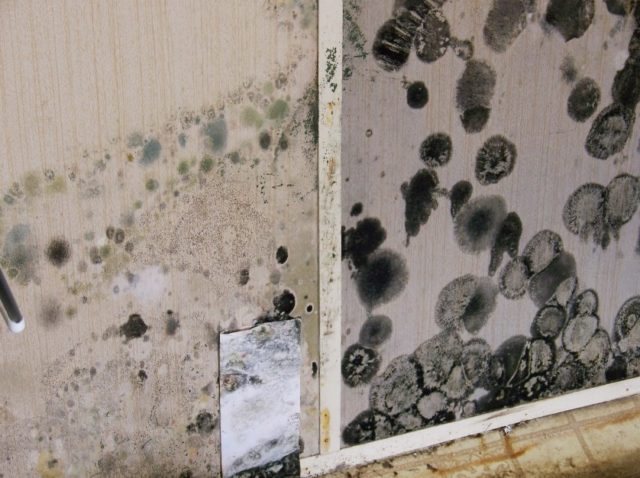
The black mold consists of fine filaments that grow in clusters. At first glance, black mold looks like dark patches, and the color ranges from completely black to dark green or gray.
Black mold clusters often look a little slimy or glistening on the surface. However, if the mold no longer gets moisture supply, the dark clusters can turn a little powdery.
Black mold can also release certain musty smell, especially when it grows in big clusters. This distinctive smell, along with the presence of visible dark patches, is the main sign of serious infestation.
If you scrub a large cluster of the black mold without glasses, some flying spores can physically affect your eyes and nostrils.
Our naked eyes cannot distinguish black mold from other types of mold. Sampling and inspection under the microscope are the only way to tell the exact species of mold.
However, sampling is usually not necessary, since all types of the mold must be treated as the same.
How Does Black Mold Grow?
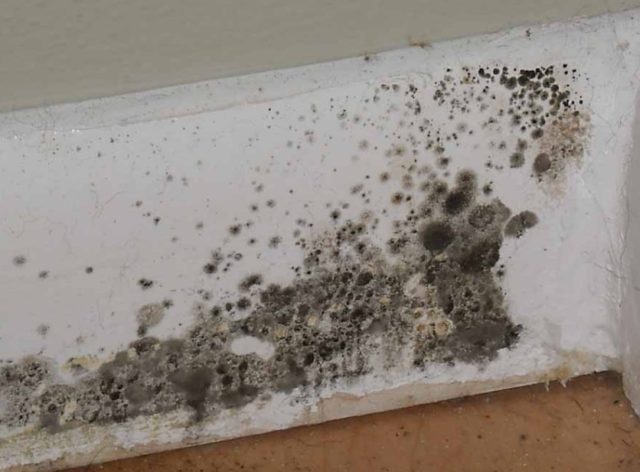
Mold spores usually come from the outside, such as sticking on humans, pets, or furniture. The spores then attach themselves to various surfaces of a building.
If the area happens to be rich in moisture and quite protected from sun exposure, that space will become an ideal place for the spores to grow into black mold. The Large presence of mold in a building usually indicates moisture or leak problem.
The most common spots for black mold to grow are in wet, dark, or damp places. Bathroom, toilet, basement, kitchen, ceiling room, under the sink, and even inside the walls are ideal spots for black mold to grow.
Mold that appears inside wall structures usually indicates undetected plumbing problem. Your air conditioner system can also be a good breeding place for black mold if there is much moisture in the air.
Black mold also grows well on certain materials. Cellulose, paper products, wood, lint, dust, upholstery, fabric, gypsum boards, and fiber boards are places where mold colonies often appear.
The humid environment will also increase the growth of black mold. Properties that are damaged by the flood can also become fertile habitat for mold.
If you love gardening and has a lot of plant pots, the black mold may appear on the surface of the pots. If you worry about exposure, you must pay attention to the condition of all the pots.
Symptoms of Black Mold Exposure
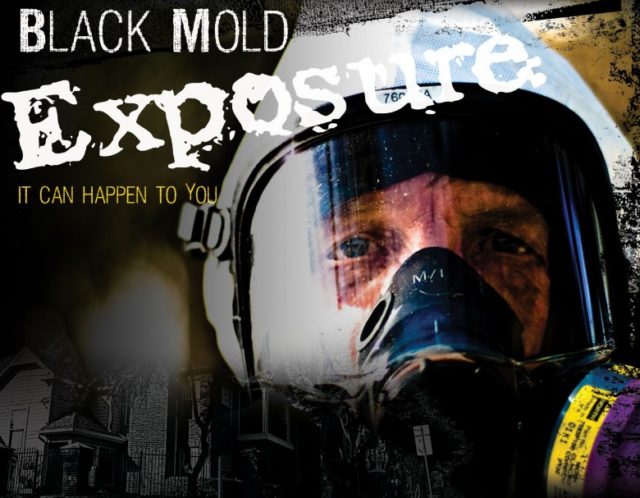
Black mold releases spores that are invisible to naked eyes, and they are the main reasons why people develop symptoms of mold exposure.
The mold also releases component called mycotoxin (which may contribute to the belief that this mold is “highly toxic”).
While the Center for Disease Control and Prevention has specifically said that mycotoxin does not make black mold toxic, the spores are still quite dangerous.
Do you know that mold exposure symptoms are often confused with common illness? Be cautious about the possibility of mold exposure if you often experience these symptoms without explanations:
- Dizziness and headache.
- Respiratory problems, such as wheezing, short of breath, or more frequent asthma symptoms for the already asthmatic people.
- Inexplicable tiredness.
- Incessant coughing and sneezing, especially among children and toddlers.
- A runny nose, fever, sore throat (flu-like symptoms).
- Hemorrhage in the lungs, especially among infants (usually after long-term exposure).
- Skin irritation (redness, itchiness, rash). Allergic reactions also occur if the person is more susceptible to the allergen.
- Mucous membrane irritation, such as in the nose, throat, or mouth.
- Eye problems (redness, itchiness, teary eyes).
These symptoms will not go away just because you take tons of cough syrup or any over-the-counter medications at home. Check the possibilities of having black mold inside the house if you experience them on a regular basis.
Effects of Black Mold
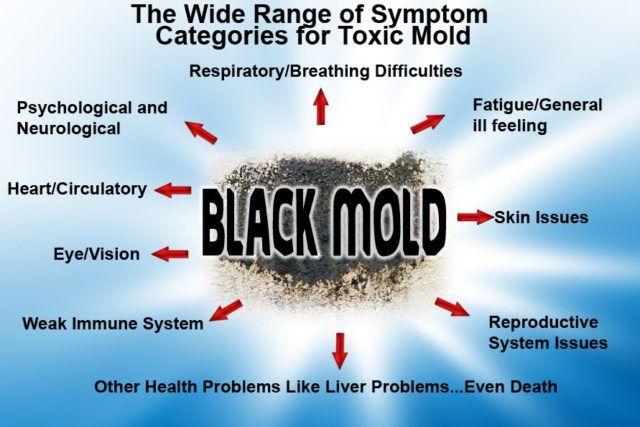
There are many long-term effects of black mold exposure that can happen if you neglect it for too long. The most obvious one is the continuous symptoms.
Can you imagine living your daily life with incessant coughing, sneezing, sore throat, eye irritation, and runny nose? These seemingly “small” symptoms will reduce your quality of life, and interfere with your personal and professional routine.
If you neglect to solve the black mold problem, there are other more serious effects. This is particularly the case of people from vulnerable groups, such as babies and children, old people, and people with chronic illness, asthma, or allergies.
Here are some long-term effects of black mold exposure you must consider:
-
Severe asthma
People who often develop small allergic reactions can experience more severe respiratory problems if they often get exposed to allergens, like mold spores.
This can lead to severe asthma that takes a long time to cure. Asthmatic people can also experience severe symptoms triggered by the spores.
-
Lung infection
If a person already has a weak immune system or compromised respiratory system, he or she can develop lung infection due to constant exposure to mold.
This is especially true of people who have a high risk of mold exposure due to their jobs, such as building cleaners, plumbers, and builders. People with existing respiratory problems can also develop lung infection from mold exposure.
-
Hypersensitivity pneumonitis
Constant exposure to mold spores can cause the immune system to develop inflammation. If this happens often, it will cause a condition called hypersensitivity pneumonitis, which refers to lung inflammation caused by this immune system reaction.
Without treatment, this can develop into actual pneumonia.
-
Hemorrhage (bleeding) in lungs
Babies are very vulnerable to mycotoxin released by black mold. Constant exposure to black mold spores will cause severe reactions, followed by respiratory problems, and finally pulmonary hemorrhage or bleed in lungs if the condition is left untreated.
-
SIDS (Sudden Infant Death Syndrome)
If you had babies and worried about SIDS, you can try reducing the risk by paying attention to a black mold problem.
Mold spores and mycotoxin are thought to be one of the possible causes of SIDS, because they can interfere with baby’s fragile respiratory system, causing lung hemorrhage.
Children, babies, and old people can also develop chronic illness because of constant exposure to black mold. Therefore, make sure you pay attention to a mold problem at home, especially if there are people from fragile groups living in there.
Best Ways to Prevent Black Mold
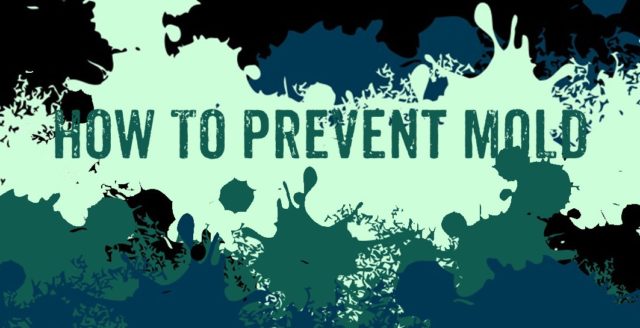
The best way to reduce health risk from the black mold is by rooting out the main cause. This is mostly related to good building maintenance, to prevent black mold from growing.
The Center for Disease Control and Prevention provides a basic guide to prevent the growth of black mold at home. Here are things you can do:
-
Keep humidity level on a certain number
Ideal humidity level to prevent black mold growth is 50% or below, and you must maintain this number all day long.
If you have vulnerable people in the same building (or if you are susceptible to spores), you must always check the humidity level to ensure proper humidity.
-
Invest in dehumidifier or air conditioner
If you live in an area with high humidity, invest in good dehumidifier or air conditioning system. It will help create a less ideal condition for black mold to grow. Plus, having a humidifier at home is good for people with asthma or allergy.
-
Create good ventilation
Proper ventilation allows fresh air and sunlight to enter the house, which reduces the risk of black mold growing in various spots.
Make sure your exhaust fans and ventilations are in good condition. Install good ventilation system in areas where mold may grow, such as the bathroom and kitchen.
-
Mix mold inhibitor in wall paint
If you plan to repaint the house, you can mix mold inhibitor into the paint to reduce the growth of mold in the future.
There are also various paints on the market that have mold prevention formula, but you can put in the mold inhibitor anyway if your house is high-risk. Read the label carefully to ensure the paint’s actual function regarding of mold.
-
Avoid carpet in the bathroom
Wet carpet is a perfect recipe for black mold growth. Avoid installing carpet in your bathroom, even if it is just a small piece of fabric.
If you want to put some doormat in the bathroom, use something that can easily dry, such as rubber mat. Rubber may also attract black mold, but not as much as fabric mat.
-
Have a regular cleanup schedule
A clean house is not an ideal place for black mold. Make sure you clean the house regularly, including one “big cleanup” every month or so.
Use cleaning agent that prevents mold, especially in places such as kitchen, under the sink, and bathroom. Make sure to use the cleaning products based on the manufacturer’s instructions to get the maximum result.
-
Fix any leakage as soon as possible
When you find plumbing problems or leakage, do not wait to fix them. Ideally, any leakage or structural problem that causes mold must be repaired within 24 to 48 hours.
-
Create exhaust for certain household applications
Various household applications create moisture, such as washing machine, air conditioner, stoves, and dryer. If possible, make sure to create proper exhaust vent to the outdoor for these appliances, so there is minimum moisture buildup in the house.
-
Apply good insulation
Insulation is another good investment in mold prevention. You can install insulation in places that often-become access or perfect space for molds, such as roofing, windows, pipes, and doors.
On the plus side, insulation is also great to keep the house in perfect temperature regardless of weather.
-
Clean immediately after the flood
Flood damage does not only happen during the deluge but also after that. The damp condition of furniture, house structures, and upholstery can become an ideal habitat for black mold.
You must immediately clean the house and furniture after the flood. If the damage is too big, consider calling professional cleaners that work on flood-damaged properties.
Keeping the house clean, well-insulated, and well-ventilated is a surefire way to reduce the risk of black mold growth. However, the first signs of mold are often invisible or hidden, and you may not see it until it spreads.
So, what to do if you find signs of mold in the house? The next two parts will discuss it.
How to Test for Black Mold

Judging from the health risk of black mold presence at home, it is natural if you think about having your house tested. However, once you find the presence of mold at home, testing is usually not necessary.
According to Central for Disease Control and Prevention, there is still no determined standard for mold exposure limit regarding of health, so “formal” mold presence test is unavailable.
The reason there is no standard is that different individuals have different levels of susceptibility. For example, a certain amount of mold present in the corner of a house may make you sick, but it may not be the case for your family member.
Therefore, there is no need for sampling and testing. Any mold presence will always require removal, including black mold.
There may be certain cases when you need to have the mold presence sampled and tested, such as for professional report about building condition.
Also, testing may be important after you finish cleaning the black mold since you need to find out whether the mold is gone or not. In this case, contact qualified professionals that can do the proper testing process.
How to Remove Black Mold
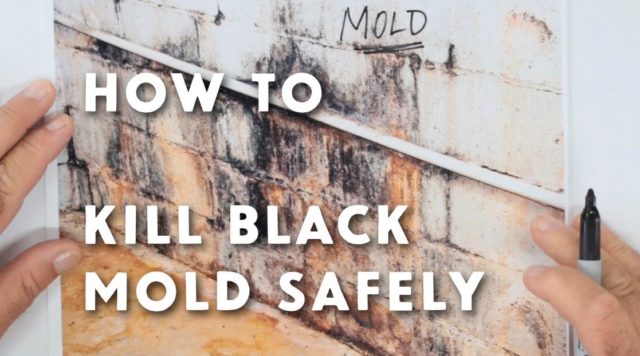
You may have done various preventive steps, but when the black mold has already appeared, there is no other way than cleaning it.
If there are susceptible people in the house, you must properly remove the black mold to make sure that there is no hidden threat.
Mold can be removed using regular commercial cleaning products, especially if the presence is still not much. Here are some tips to remove black mold:
-
Discuss with health professionals
Before you try to remove any mold, consult with a health professional—especially if you have allergic reactions or asthma risk.
Cleaning mold will expose you to flying spores and small mold particles, and although you wear protective gear, the exposure risk is still there. If it is not worth the risk, consider investing in professional mold cleaning service.
-
Wear protective gear
Goggles, nonporous gloves, and mask are must-have protective gears when you are removing mold by yourself. Flying spores can hurt your eyes and even get inhaled, damaging your health.
You also need to use some respirator, such as N-95, which is something available at hardware stores. Do not forget to open all windows and doors when cleaning mold to let fresh air inside.
-
Safely prepare cleaning products
Detergent and chlorine bleach, especially the ones that have an anti-mold formula, is usually enough to remove black mold through proper cleaning.
However, do not use ammonia-based product together with chlorine bleach, let alone mix them. The resulting fume is toxic and can be harmful to your health, or even fatal.
-
Remove moldy porous material
If you have soft, porous materials that are affected by black molds, such as carpet and upholstery, the best solution is to discard them.
Porous materials that have black mold may still hold spores inside their structures, even after thorough cleaning and washing. Losing some upholstery is a better option than getting ill.
-
Bring moldy furniture to open area
If you have furniture items that also need to be cleaned, such as a door, table, or cupboard, remove them from the house and carry them outside.
This is to prevent mold spores from flying to other parts of the house when you are cleaning them. Make sure vulnerable groups of people do not often visit the area, so they do not inhale the flying spores.
-
Scrub properly
Light black mold on hard surfaces, such as wood, vinyl, or ceramic, can be removed with vigorous scrubbing using detergent.
You can also mix 1 cup of chlorine bleach with 1 gallon of water, and use this mixture after using detergent to kill the mold. Throw away the sponge, brush, and cloth you use for cleaning mold afterward.
-
Keep the area dry
After cleaning the problematic spots, you must keep them as dry as possible. Protect them from moisture such as water splashes, and let them dry naturally.
Make sure you have taken care of leakage or plumbing problems if any. This is important to keep black mold from coming back.
One note of caution: if your house gets flooded, the residue may also contain bacteria. Instead of focusing on cleaning the black mold, you may want to call home remodeling or cleaning experts.
They have the proper equipment to fix the damage and clean the affected parts without leaving any unwanted “guests.” If you live in an area with high risk of flood, invest money in paying for professional service just in case.
Finally, you need to know when to call experts. If the black mold happens in hidden space such as behind the wall or covers more than 10 square feet of area, you need to call professional for thorough cleaning.
The US Environmental Protection Agency has an online document called Mold Remediation in Schools and Commercial Buildings, a useful guide if mold problem happens in special buildings.
Conclusion
Black mold may be one of the less common mold types, but it is often misunderstood. Although black mold produces mycotoxin, it does not mean that the mold is toxic.
Nevertheless, exposure to the mold’s spores can cause various health problems, from allergic reactions to lung hemorrhage. The risk is especially high for vulnerable groups of people, including babies.
If you want to prevent black mold at home, make sure to keep the house clean and dry, with no more than 50% of humidity level. Create good ventilation and check the house regularly for plumbing problems or leakage.
If you need to remove the mold, use proper cleaning methods with chlorine bleach, water, detergent, and protective gear. Consult professionals if you cannot handle large-scale mold problem.
Black mold may be dangerous and pose health risks.
However, with proper cleaning method, perfect humidity level, enough access to sunlight, and good ventilation, you will be able to avoid the black mold growth and reduce the risk of long-term health problems.
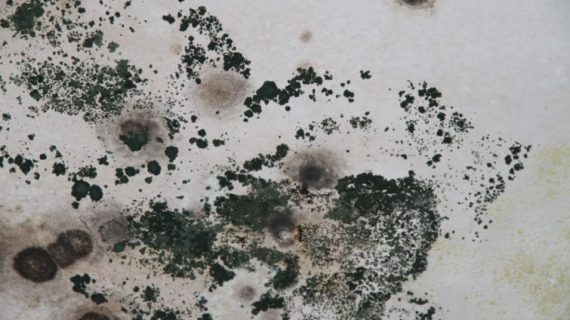
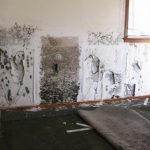

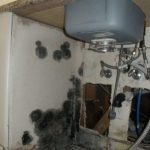
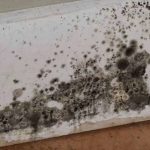

It’s good to know how molds can be removed using regular commercial cleaning products. However, it can still post health risks so it would be best to have it handled by a professional mold sampling service. I’ve been stressing about the mold development in my property, which was firstly seen at the basement.